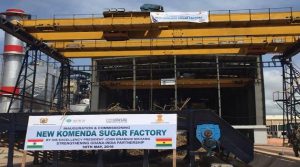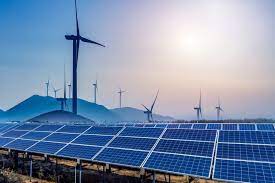Mining major BHP has reported record production from its Western Australian iron-ore operations during the nine months to March, despite a 4% fall in production during the March quarter on the back of wet weather and planned maintenance.
Iron-ore production in the year-to-date was up 4% on the previous corresponding period, to 188.3-million tonnes, while production in the three months to March declined by 4% on the December quarter, to 59.9-million tonnes.
Increases in the year-to-date reflected record production at the Jimblebar mine as well as strong performance across the supply chain, BHP said, with improved train cycle times and car dumper performance and reliability.
This record performance was achieved despite significant weather impacts in December, January and February, and the planned Mining Area C and South Flank major tie-in activity.
Commissioning activities for South Flank are expected to commence in the June 2021 quarter, the miner said.
Iron-ore volumes for the 2021 financial year are expected to be in the upper half of the guidance range of between 244-million and 253-million tonnes.
BHP on Wednesday reported that petroleum production for the nine months to March declined by 8% on the previous corresponding period, to 75.8-million barrels of oil equivalent.
However, for the quarter ended March, petroleum production was up by 7% to 25.4-million barrels of oil equivalent, with the higher volumes reflecting an increase in BHP’s Shenzi working interest following an acquisition in November of last year, and the impacts from Hurricanes Delta and Zeta in the Gulf of Mexico in the prior quarter.
Petroleum production guidance for the 2021 financial year remains unchanged at between 95-million and 102-million barrels of oil equivalent, with volumes expected to be in the upper half of the guidance range.
Meanwhile, copper production for the nine months to March was down 6%, to 1.23-million tonnes, while quarterly copper production was down 9% on the December quarter, to 391 400 t.
BHP said that the lower volumes resulted from a decrease in throughput at the Escondida mine, in Chile, reflecting the impacts of reduced operational workforce owing to the continuation of the Covid-19 restrictions, as well as lower concentrate feed grade.
The miner’s full-year production guidance for copper for the 2021 financial year increased to between 1.53-million and 1.66-million tonnes from between 1.51-million and 1.64-million tonnes, on the back of higher expected tonnage from Escondida.
Metallurgical coal production in the year-to-date was down 2%, to 28.8-million tonnes, but up 1% in the quarter ended March, to 9.6-million tonnes, while energy coal production declined 26% in the year-to-date, to 13-million tonnes, but increased by 34% in the March quarter, to 4.8-million tonnes.
BHP reported higher volumes at the Cerrejon operation, as a result of strike action in the December quarter, however, this was partially offset by lower volumes at the New South Wales energy coal assets, owing to significant wet weather impacts and increased washed coal in response to reduced port capacity following damage to a shiploader at the Newcastle port.
Metallurgical coal production in the full year has been reduced to between 39-million and 41-million tonnes, down from the 40-million to 44-million tonnes previously estimated, while energy coal production has been reduced to between 18-million and 20-million tonnes, from between 21-million and 23-million tonnes.
For the nine months to date, BHP reported a 19% increase in nickel production, which reached 66 600 t, with 20 400 t produced in the March quarter, a 15% decline on the December quarter. The lower volumes in the March quarter resulted largely from planned maintenance undertaken at the Kwinana refinery.
Nickel production expectations for the full year have remained unchanged at between 85 000 t and 95 000 t.
“We are reliably executing our major projects, bringing on new supply in copper, petroleum and iron-ore. The Spence Growth Option and Samarco are ramping up and West Barracouta, in petroleum, started production this month,” said BHP CEO Mike Henry, noting that first production from the Ruby petroleum project is expected in the coming weeks.
“BHP continues to deliver on decarbonizing, in line with the Paris Agreement goals. We have established emissions reduction partnerships with three major steelmakers in China and Japan whose combined output equates to around 10% of global steel production. In shipping, we have successfully completed an initial trial of marine biofuels, in addition to the tender awarded last year for liquefied natural gas-powered iron-ore vessels.
“In our own operations, we have established significant renewable power supply agreements for our Kwinana nickel refinery, Queensland coal operations, and Escondida and Spence copper mines.
“With our focus on keeping our people safe, costs down and productivity up, we are well-positioned to finish the year strongly and continue delivering the essential products the world needs,” Henry said.






